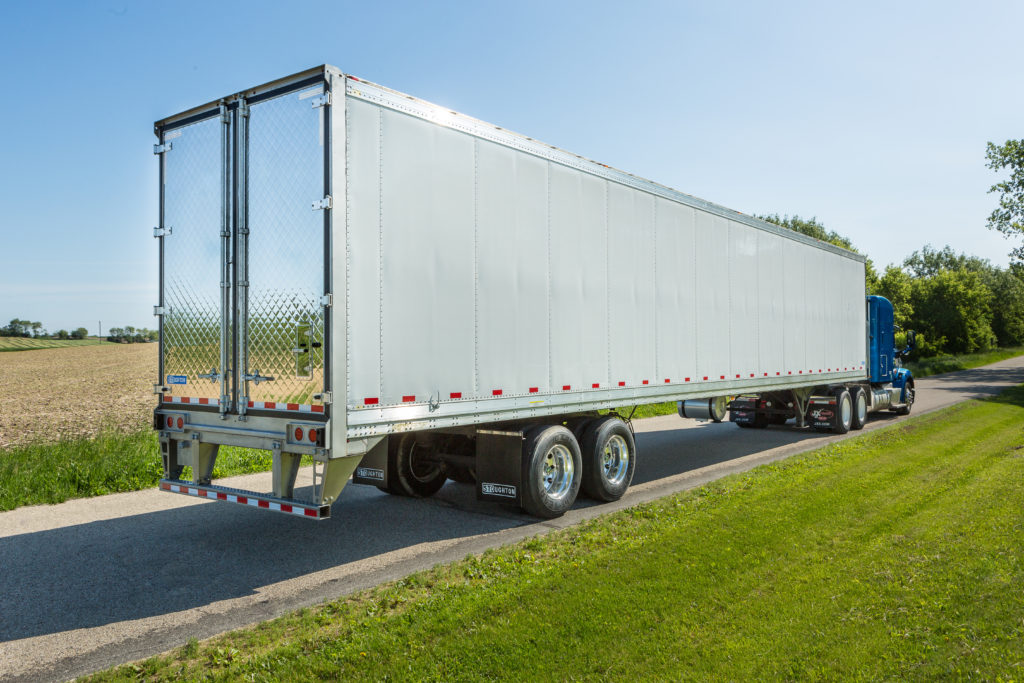Why you can’t get all the trailers you want
Allocation. It’s become the most dreaded word of 2022. Well, maybe not when you’re divvying up space in your trailers or warehouses for customers. But if you’re a fleet manager wanting to add equipment, allocation is the last thing you want to hear from your preferred OEM.
And in turn, it’s the last thing an OEM wants to hear from its own partners. Yes, they too are limited by allocations from their suppliers who provide everything from suspensions to mudflaps, tires, and raw materials.
I’m writing this from industry forecaster FTR’s Transportation Conference in Indianapolis, where I’m trying to get a better handle on why fleets can’t procure equipment – specifically the trailers – they so desperately need. Yes, we all know Class 8 trucks are also hard to come by, but those are laden with semiconductors, a shortage of which has been well documented. So, what’s the deal with the comparatively simple trailer?
“What’s limiting production? It’s components, materials and labor,” explained David Giesen, vice-president of sales and marketing with trailer manufacturer Stoughton. “We are dealing with line shutdowns on a regular basis because things did not arrive that we thought were going to arrive, and we’re also dealing with a workforce that is hard to add to and keep.”

When the economy shut down at the onset of the Covid-19 pandemic, manufacturers lost their labor force, which has been slow to return to work. It’s not just an issue in manufacturing. Giesen said employees are leaving for other opportunities without so much as a goodbye, meaning there’s no opportunity to conduct exit interviews to determine where they’re going or why.
In addition to that, raw material and component shortages are popping up all the time. Every week it’s something new, Giesen explained. To manage this, OEMs are building trailers to as near completion as possible, tagging them, and parking the units until the missing parts arrive. When a new shipment of, let’s say mudflaps arrives, the line has to be shut down again to install the components on those unfinished units. It’s totally inefficient.
All this is happening while fleets are attempting to increase their trailer-to-truck ratios. It seems counterintuitive that fleets would want more trailers per power unit. But, what’s harder to get than a new trailer? How about an experienced driver.
Large fleets in particular are combating the driver shortage and increasing driver utilization by embracing drop-and-hook freight. This way drivers show up at the receiver, drop a loaded trailer and grab another one for delivery without having to spend hours – potentially unpaid and grumpy hours – waiting to be unloaded and reloaded.
This increase in drop-and-hook freight is adding to already pent-up demand for new trailers. The trailer OEMs are seeing unprecedented demand, but also sharp increases to their own costs. Giesen acknowledged those costs must be passed along to the buyer, and in some cases prices have been increased eight times between when a dry van order was placed and when it was ultimately delivered.
“When given the opportunity to cancel their order, they don’t want to cancel,” he said of customers. Due to the uncertainty over pricing, trailer OEMs are understandably reticent to begin taking orders too far into the future. This means more allocation.
While a trailer buyer could be forgiven for being frustrated at the price increases and being limited to the number of trailers they can even order in the first place, anger will get you nowhere, my friend. No one has watched this tap dance more closely than Don Ake, FTR’s vice-president – commercial vehicles. He had nothing but praise for how well OEMs are managing their backlogs. For starters, while Giesen may have been the brave soul explaining the rationale behind allocation at FTR, all manufacturers are largely doing the same thing.
“You can be frustrated at the OEMs’ performance, but that would be wrong,” Ake said. “We have never seen a tougher supply chain than we have now. They have done, in my mind, a tremendous job. Better than other industries.”
And when they’re all employing pretty much the same strategies – including allocations – Ake said there’s good reason to believe that their collective approach is the right one, or at least the fairest. Even if it involves using the dreaded A word.
Have your say
This is a moderated forum. Comments will no longer be published unless they are accompanied by a first and last name and a verifiable email address. (Today's Trucking will not publish or share the email address.) Profane language and content deemed to be libelous, racist, or threatening in nature will not be published under any circumstances.
We a problem with supply chain as they went just in time and a housing shortage for workers and drivers in many parts of the world including ont